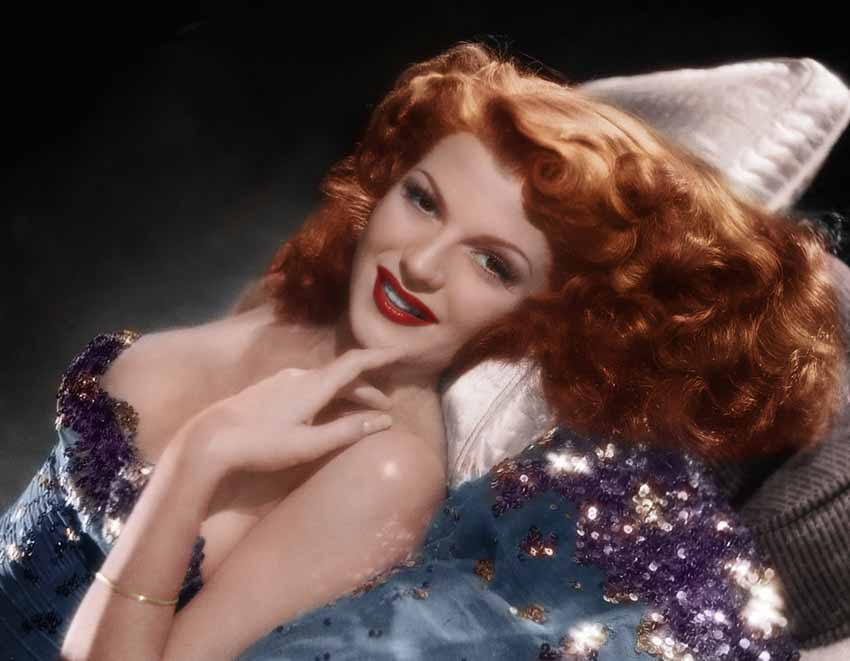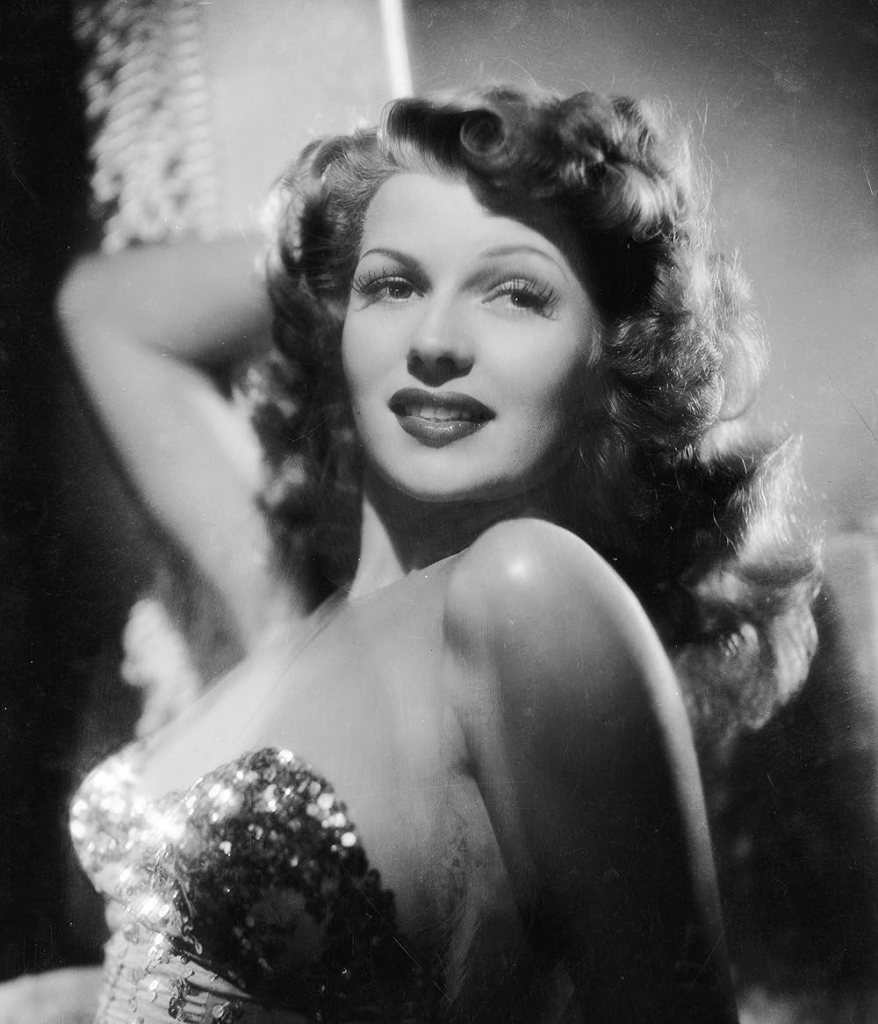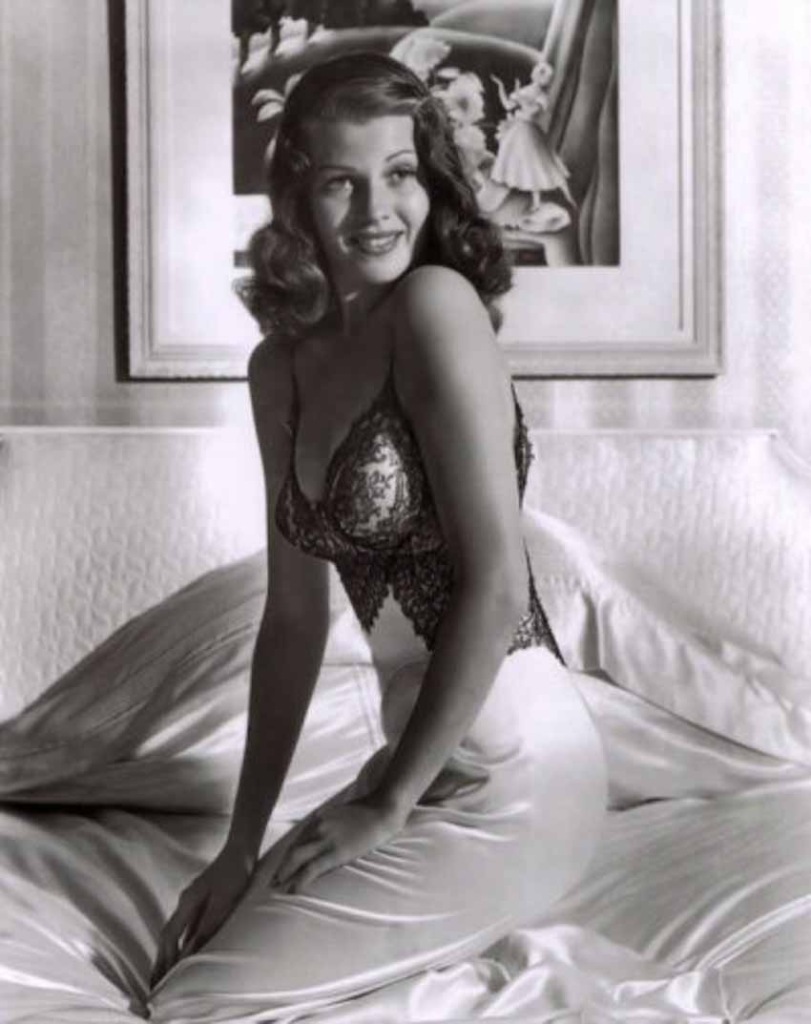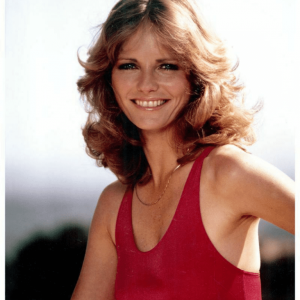Rita Hayworth was more than just a movie star—she was an icon of Hollywood’s Golden Age. With her striking beauty, undeniable talent, and magnetic screen presence, she became the ultimate Love Goddess of cinema. From Gilda to Pal Joey, she captivated audiences, setting the standard for glamor and seduction. Yet behind the dazzling image, Rita’s life was filled with struggles, heartbreak, and a longing for love that always seemed just out of reach.
From Margarita Cansino to Rita Hayworth: A Hollywood Transformation

Born Margarita Carmen Cansino in 1918, Rita came from a family of dancers. Her father, Eduardo Cansino, was a strict and ambitious Spanish-born dancer who pulled her out of school at the age of 12 to train her for the vaudeville circuit.
Her early years were spent rehearsing endlessly, leaving her little time for a normal childhood. “Rehearse, rehearse, rehearse,” Rita once said. “That was my girlhood.” Hollywood soon took notice of her beauty and talent, but they wanted her to fit the industry’s idealized version of a leading lady.
Her first husband, Ed Judson, a businessman nearly twice her age, pushed her to change her appearance. He convinced her to dye her naturally dark hair red and undergo painful electrolysis to raise her hairline—transforming Margarita Cansino into the more Anglo-sounding Rita Hayworth. The reinvention worked, and soon, Columbia Pictures positioned her as their top star.
The Rise of a Hollywood Bombshell

Rita’s breakthrough came with Cover Girl (1944), where she dazzled audiences alongside Gene Kelly. But it was Gilda (1946) that cemented her status as a sex symbol. In that film, her iconic scene—tossing her hair back and peeling off her gloves to the tune of “Put the Blame on Mame”—became one of the most seductive moments in cinema history.
She was adored by fans worldwide, especially American soldiers during World War II. Her image was plastered in barracks, and in 1946, it was even painted on the side of an atomic bomb. Her second husband, Orson Welles, remarked, “I want my daughter to be able to tell her daughter that Grandmother’s picture was on the last atom bomb ever to explode.”
Despite the adoration, Rita was deeply unhappy. Her rise to fame came at a cost—she was under the strict control of Columbia Pictures’ boss, Harry Cohn, a man she later described as “a monster” who controlled every aspect of her career.
A Love Life Filled with Heartbreak
Though she was Hollywood’s dream girl, real love remained elusive for Rita. She married five times, each relationship ending in disappointment.
- Orson Welles (1943-1947): Her marriage to the genius filmmaker was full of passion but also turmoil. Orson was unfaithful, and Rita struggled with insecurity. He later admitted, “I just saw this lovely girl destroying herself.”
- Prince Aly Khan (1949-1953): After divorcing Welles, Rita married Prince Aly Khan, making her Hollywood royalty. However, the fairy-tale romance soon unraveled due to his womanizing and cultural differences.
- Dick Haymes & James Hill: Her later marriages, to singer Dick Haymes and producer James Hill, were even more disastrous, marked by emotional abuse and further instability.
Kirk Douglas, one of her rumored lovers, once said, “I felt something deep within her I couldn’t help—loneliness, sadness—something that would pull me down.” Even Orson Welles, one of the great loves of her life, admitted, “All her life was pain.”
The Silent Battle: A Misunderstood Struggle

By her 40s, Rita’s life started unraveling. Her behavior became erratic, and many attributed it to alcoholism. She would forget lines on set, have mood swings, and disappear from the public eye for months at a time.
It wasn’t until 1980 that the truth emerged—she was suffering from early-onset Alzheimer’s disease, a condition barely understood at the time. Looking back, her nephew Richard Cansino admitted, “It’s upsetting that we all thought she was drinking. I feel guilty I perceived it that way.”
A Quiet Ending and Lasting Legacy

In her final years, Rita lived a secluded life, cared for by her devoted daughter, Yasmin Khan. Despite everything, she remained beloved by close friends like Orson Welles and Glenn Ford, who visited her often.
Orson Welles, just one day before his own passing in 1985, said of her, “Rita is one of the dearest and sweetest women that ever lived.” Two years later, on May 14, 1987, Rita Hayworth passed away at the age of 68.
She left behind an extraordinary legacy. Not just as Hollywood’s Love Goddess, but as a woman whose struggles helped raise awareness for Alzheimer’s disease.
Rita Hayworth wasn’t just a star—she was a woman of depth, strength, and an enduring mystery. Behind the bombshell image was a soul searching for love and happiness, a search that made her as human as the rest of us.


